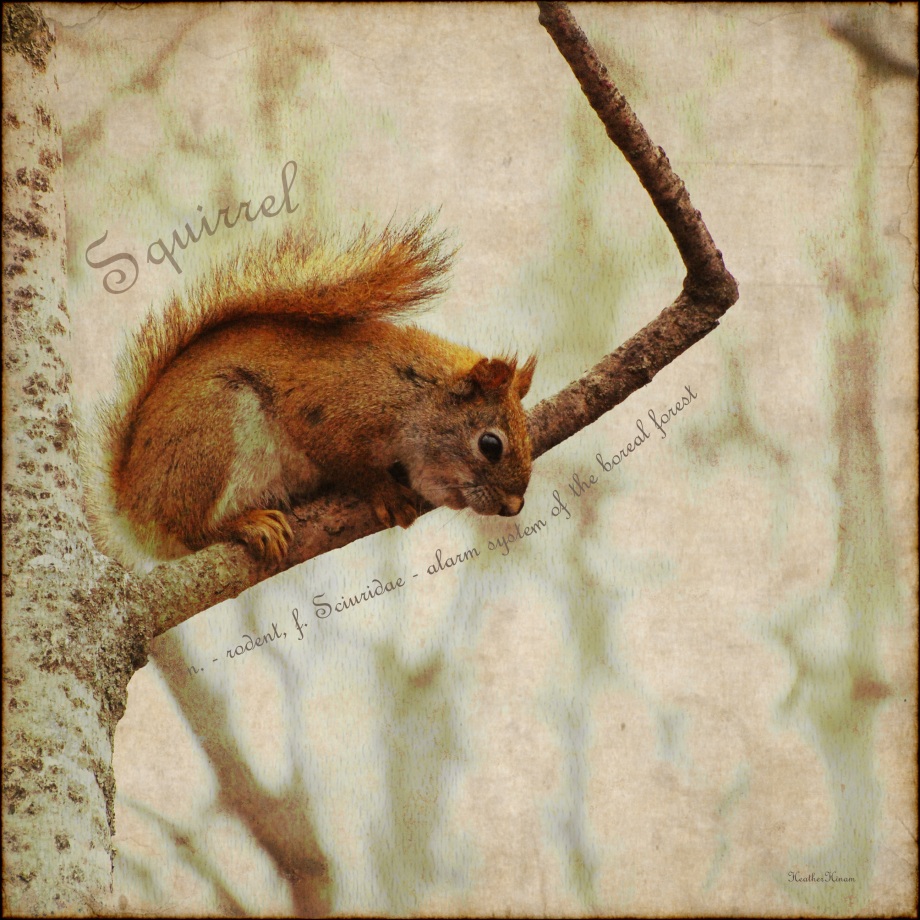 After charging out of the gate early and then several false starts later, spring is finally settling in here in the boreal forest. It’s been a strange year so far and I can’t help but wonder worriedly at the changes I’ve been seeing in the climate these last several years. Between summer-like temperatures, then snow and frost, it’s been hard to get true sense of the seasons.
After charging out of the gate early and then several false starts later, spring is finally settling in here in the boreal forest. It’s been a strange year so far and I can’t help but wonder worriedly at the changes I’ve been seeing in the climate these last several years. Between summer-like temperatures, then snow and frost, it’s been hard to get true sense of the seasons.
The animals, however, tell a different story. Seasonal behaviour in most species is hard-wired to a certain degree, often tied in less to temperature and more to changes in the length of daylight. While, unseasonably warm or cold days can either speed up or slow down nature’s clock, the overall pattern remains relatively constant.
For me, one of the first harbingers of spring comes in the form of a frantic ball of red fur streaking through the forest. Red squirrels (Tamiascurius hudsonicus) are active all year, racing from tree to tree, industriously gathering up anything remotely edible and either devouring it on the spot or stuffing it away in a midden, the heart of their territory, for leaner times.
This flurry of activity takes a definite upturn as the darkness of winter gives way into the softer, longer light of spring. Here in the boreal, that can be as early as the beginning of March, when patches of snow-free ground begin to appear on the forest floor. Females are only reproductively receptive for a day, but she’s not shy in giving her potential suitors a head’s up, bounding through their territories, days before her estrous, reminding them of their impending opportunity.
Squirrels aren’t known for their social grace or a warm and welcoming demeanor. These feisty little rodents are fiercely territorial, expressing their displeasure at anyone and anything that crosses into their domain with an insistent rattle that ricochets off the surrounding trees like a miniature jackhammer. Mating season is the only time of year that edginess eases somewhat and males welcome the presence of female intruders into their little patch of forest, hoping for a chance to pass on their genes. However, if another male crosses over the boundary, all bets are off and the territory holder immediately lays into the interloper, the two of them bounding through the forest in a flurry of fur and furious chattering.
Females are equally antisocial and once the deed is done and she’s been inseminated, the donor is no longer welcome on her doorstep. Like many mammals, red squirrel females raise their young on their own, tucking themselves away into an old woodpecker hole to set-up a home for their young.
Gestation is only a little over a month, so it won’t be long before the squirrels in my neighbourhood find themselves with new mouths to feed. The young are born blind and pink, completely dependent on their mother’s milk and warmth, tucked up in the whorls of grass with which she’s lined their nest. Nests are established opportunistically, and squirrels will just as easily set up house in a nest box intended for birds as in a natural cavity. In my years working with saw-whet owls, I’ve stuck my hand into my fair share of squirrel’s nests and come out with a palm full of very warm, very naked little babies.
They grow quickly, however, putting on almost 2g/day until they’re ready to venture out on their own just over four months later. By that time, the little guys are fully furred, smaller replicas of their parents, with an innate ability to scamper through the trees without a second thought. That’s not to say there isn’t a bit of a learning curve. One can only marvel at their resilience when watching a juvenile plunge 40 ft out of the tree to the ground, dust himself off and climb right back up like it was nothing more and a stubbed toe.
Resilience is key if you’re a red squirrel. Once they leave the nest, times are tough. By the end of the summer, they are no longer welcome on their mother’s territory and must take up residence someplace else. Competition is fierce and predators, like marten, goshawks and owls are just waiting to make a meal of them. Still, squirrels are scrappers and if they can get a foothold in that first year of life, they’ll likely be just fine. So, spring settles in with fits and starts after an unnervingly warm winter, I can’t help but take comfort in the ringing rattle outside my window, reminding me that even with all that is changing around me, the seasons still cycle and life finds a way to move ever forward.